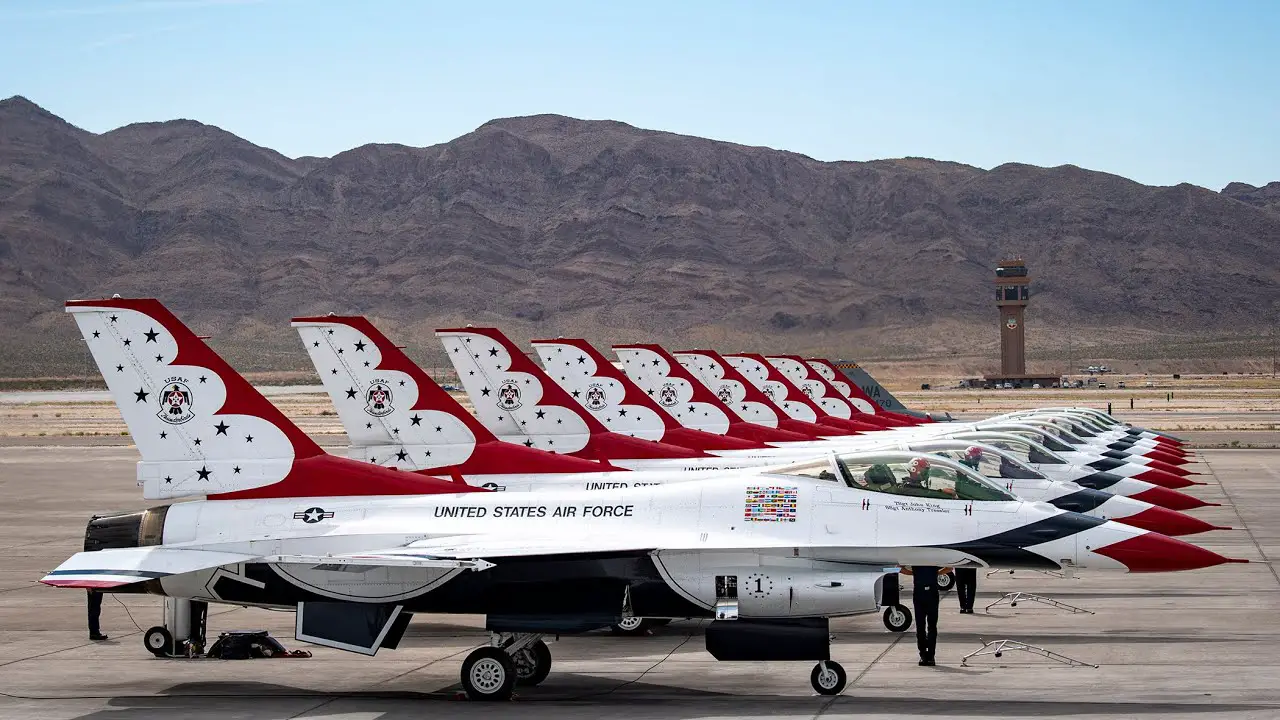The USAF Air Demonstration Squadron (“Thunderbirds”) is the air demonstration squadron of the United States Air Force (USAF). The Thunderbirds are assigned to the 57th Wing, and are based at Nellis Air Force Base, Nevada. Created 67 years ago in 1953, the USAF Thunderbirds are the third-oldest formal flying aerobatic team (under the same name) in the world, after the French Air Force Patrouille de France formed in 1931 and the United States Navy Blue Angels formed in 1946. The Thunderbirds Squadron tours the United States and much of the world, performing aerobatic formation and solo flying in specially marked aircraft. The squadron’s name is taken from the legendary creature that appears in the mythologies of several indigenous North American cultures.

The Thunderbirds Squadron is a named USAF squadron, meaning it does not carry a numerical designation. It is also one of the oldest squadrons in the Air Force, its origins dating to the organization of the 30th Aero Squadron, formed at Kelly Field, Texas, on 13 June 1917. Officers serve a two-year assignment with the squadron, while enlisted personnel serve three to four years. As the squadron performs no more than 88 air demonstrations each year, replacements must be trained for about half of the team each year, in order to provide a constant mix of experience. In addition to their air demonstration responsibilities, the Thunderbirds are part of the USAF combat force and if required, can be rapidly integrated into an operational fighter unit. Since 15 February 1974 the Thunderbirds have been a component of the 57th Wing at Nellis.

The Thunderbirds perform aerial demonstrations in the F-16C Fighting Falcon, and they also fly two F-16D twin-seat trainers. The F-16 has been the demonstration aircraft for the Thunderbirds since the 1983 season. In January 1982, four members of the squadron were killed in what became known as the “Diamond Crash” of T-38 Talon aircraft which the squadron had flown since 1974. Partially as a result of that accident, the squadron switched to the F-16A, and sat out the 1982 airshow season and spent that year retraining and transitioning over to the new aircraft to ready themselves for the 1983 season. The F-16, however, had been considered for transition prior to the accident. In rebuilding the Thunderbird Team, the Air Force recruited previous Thunderbird pilots, qualified each in the F-16A, and had them begin by flying “two-ship” maneuvers, then expanded the program one airplane at a time up to the full six airplanes.

The team continues to fly the F-16, having switched from the F-16A to the F-16C in 1992.[3] Only a few minor modifications differentiate a Thunderbird from an operational F-16C. These include the replacement of the 20 mm cannon and ammunition drum with a smoke-generating system, including its plumbing and control switches, the removal of the jet fuel starter exhaust door, and the application of the Thunderbirds’ glossy red, white, and blue polyurethane paint scheme. All the modification work is performed at the maintenance depot at Hill AFB near Ogden, Utah. Other than those modifications, the aircraft are taken from the standard USAF inventory as production fighters, and can be returned to an operational squadron in short order without any major modification.
















